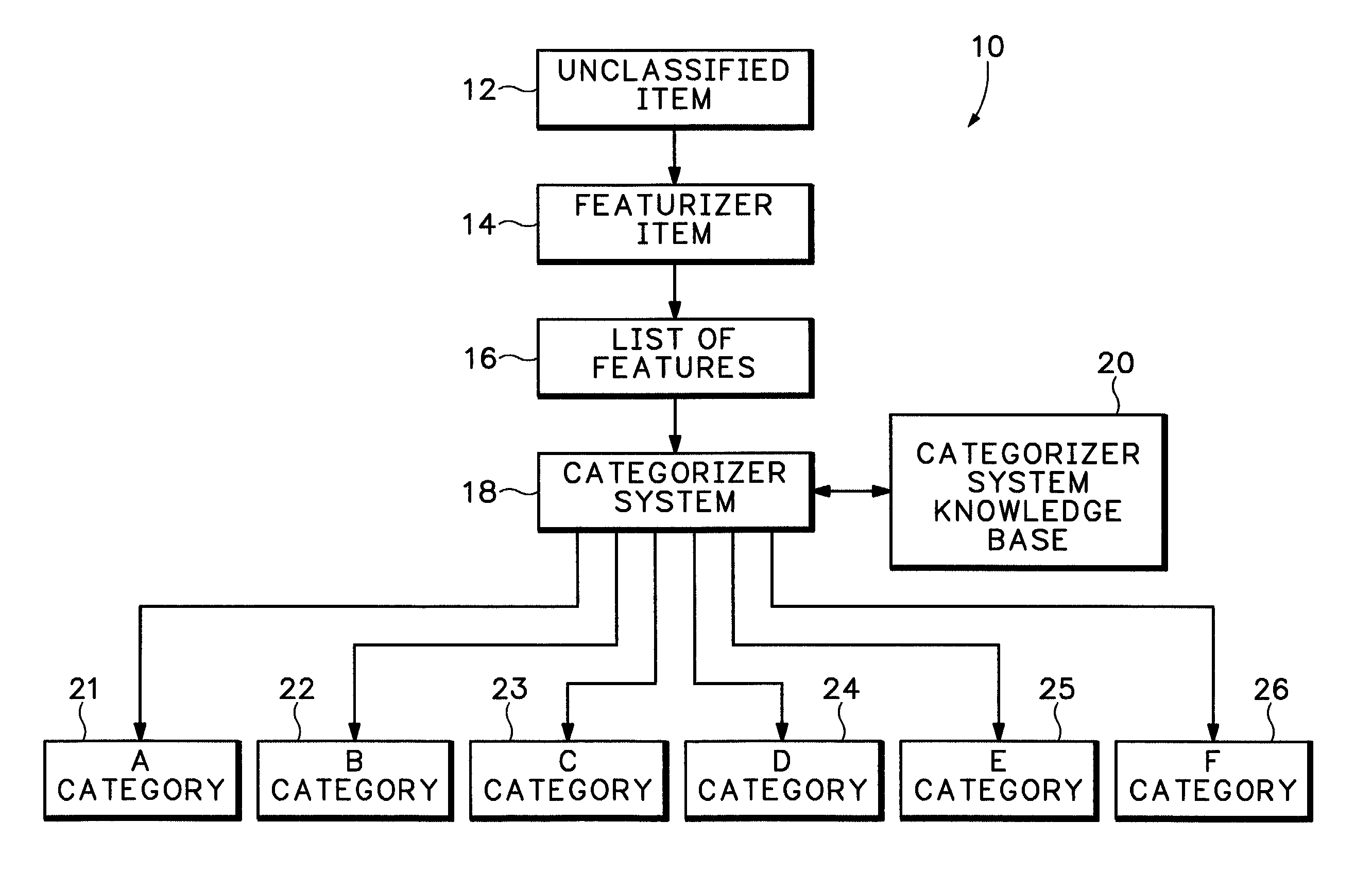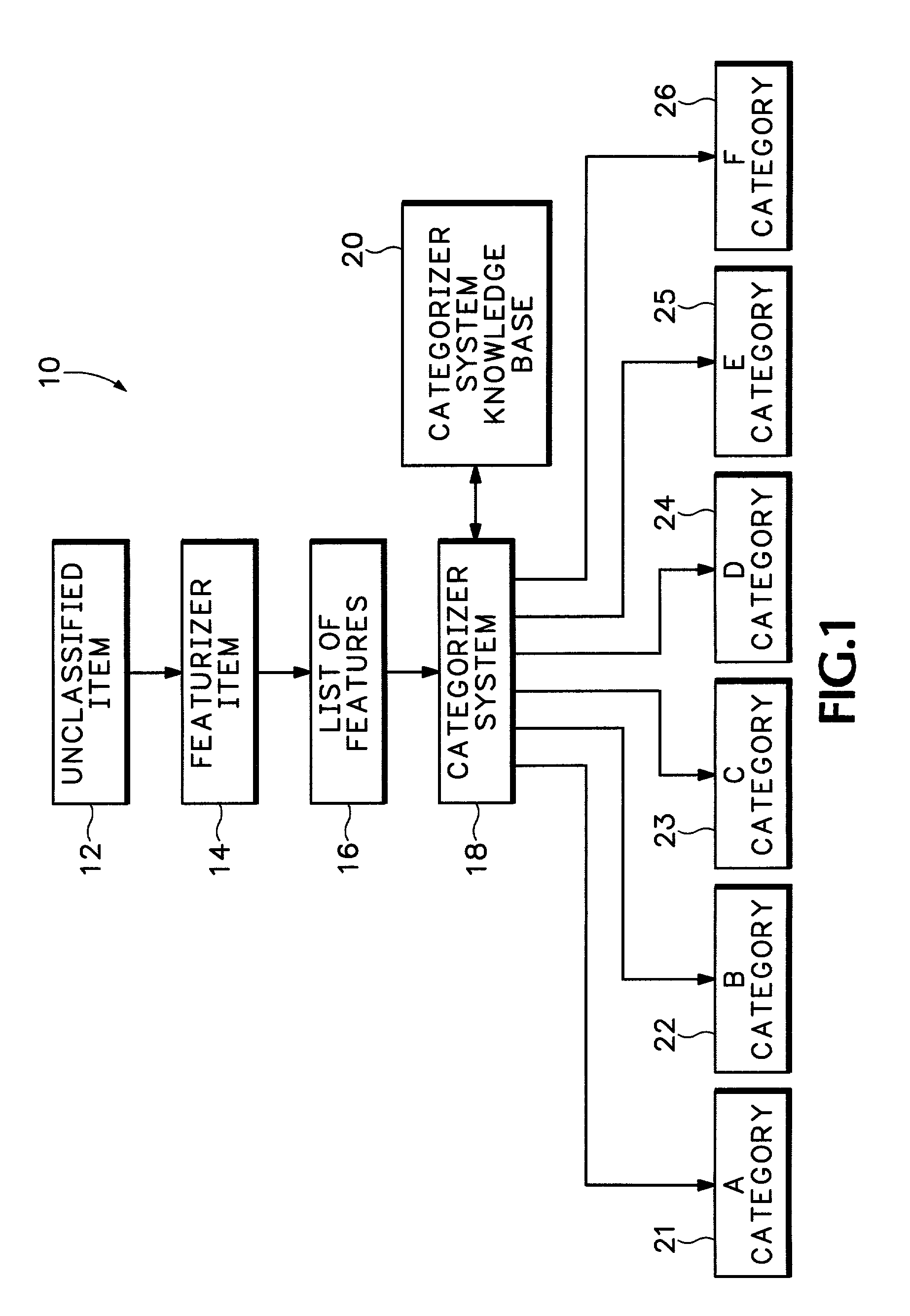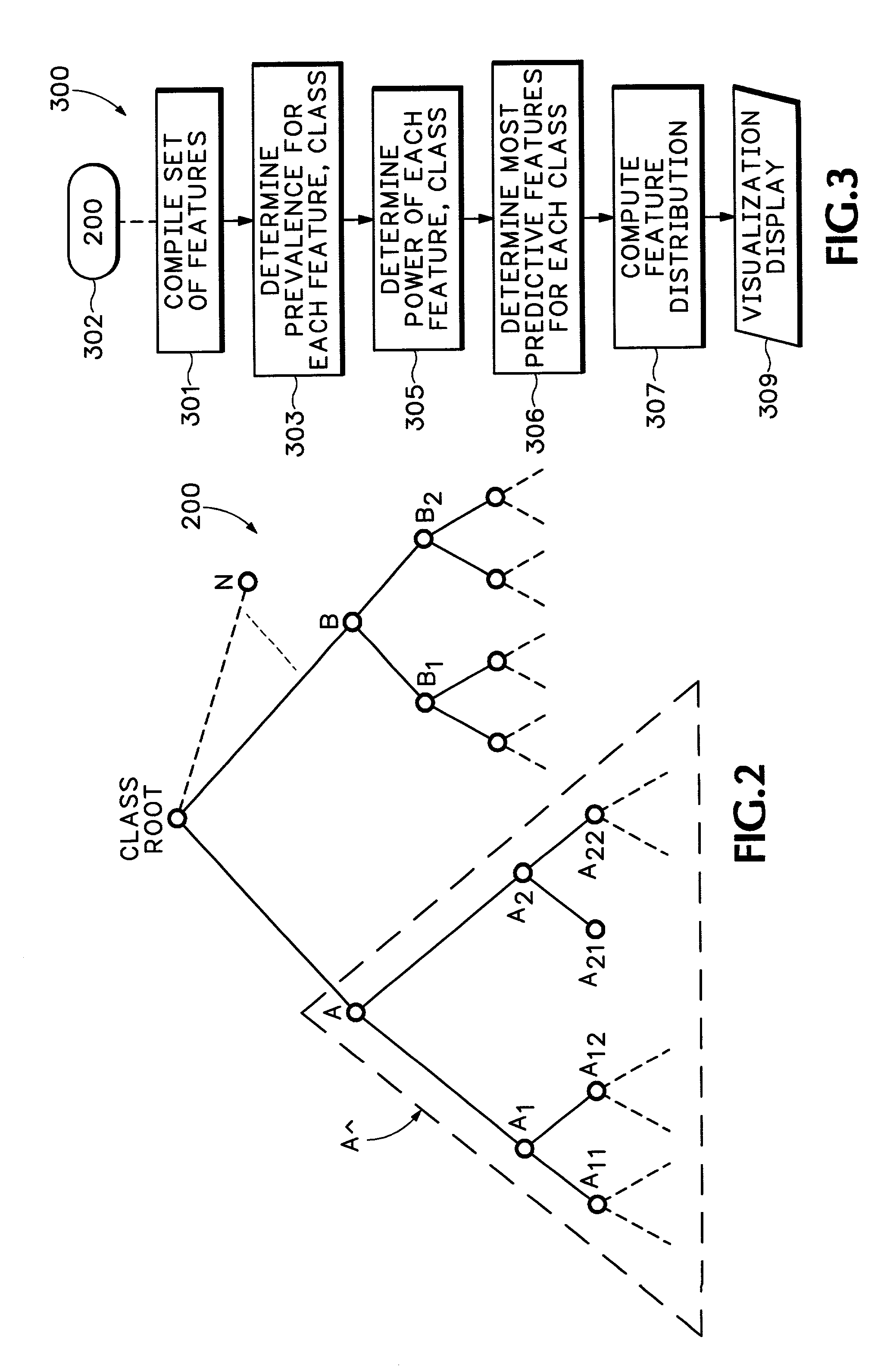Tool for visualizing data patterns of a hierarchical classification structure
a hierarchical classification and data visualization technology, applied in the field of topical decision algorithms and structures, can solve the problems of ignoring appropriate target information, unable to create and maintain such hierarchy structures, and only providing a relatively unorganized listing of topic searches,
- Summary
- Abstract
- Description
- Claims
- Application Information
AI Technical Summary
Benefits of technology
Problems solved by technology
Method used
Image
Examples
Embodiment Construction
[0029] Reference is made now in detail to specific embodiments of the present invention, which illustrate the best mode presently contemplated for practicing the invention. Alternative embodiments are also briefly described as applicable. Subtitles are used herein for convenience only; no limitation on the scope of the invention is intended nor should any be implied therefrom.
[0030] Definitions
[0031] While the application range of the embodiments of the present invention is broad, for the purposes of describing the embodiments of the present invention, the following terminology is used herein:
[0032] A "case" (e.g., an item such as a knowledge item or document) is something that can be classified into a hierarchy of a plurality of possible classes.
[0033] A "class" (e.g., topic or category, or in terms of structure, a node) and is a place in a hierarchy where items and other subclasses can be grouped. Thus, as an example of a hierarchy structure representative of a set of computerized...
PUM
 Login to View More
Login to View More Abstract
Description
Claims
Application Information
 Login to View More
Login to View More - R&D
- Intellectual Property
- Life Sciences
- Materials
- Tech Scout
- Unparalleled Data Quality
- Higher Quality Content
- 60% Fewer Hallucinations
Browse by: Latest US Patents, China's latest patents, Technical Efficacy Thesaurus, Application Domain, Technology Topic, Popular Technical Reports.
© 2025 PatSnap. All rights reserved.Legal|Privacy policy|Modern Slavery Act Transparency Statement|Sitemap|About US| Contact US: help@patsnap.com



